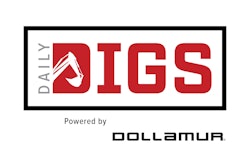![[Graphic by Nicole Bell]](https://img.athleticbusiness.com/files/base/abmedia/all/image/2018/06/ab.VR618_feat.png?auto=format%2Ccompress&q=70&w=400)
After watching a human student-athlete from the University of Southern Indiana shoot hoops in a virtual model of a facility yet to be built, I’m convinced virtual reality has a key role in helping us design and create better athletics facilities for the future. Let me explain.
Nearly two months ago, my colleagues and I from CannonDesign collaborated with USI Athletic Director Jon Mark Hall to present to current and potential donors an update on the renovation and expansion of the USI’s Physical Activities Center. An important project for the campus, the effort will renovate the existing center and add 200,000 square-feet of additional space, including a 4,300-seat basketball arena. Looking to help donors experience the possibilities of this new facility in an exciting way, we created both an animation and a VR tour. The idea was to show them the facility in 2D and then let them experience it in 3D. It ended up being one of the most rewarding design presentations of my life.
How It Worked?
Given the cost of VR goggles, we couldn’t have everyone in attendance wear a head set and virtually step inside the model at the same time. Instead, I volunteered to don the goggles and enter the model while we projected everything I could see in the headset onto a large screen that everyone could see. Once I acclimated myself, I was able to move through the virtual facility and point out important spaces and features as I went. The ability to stop, start, offer 360-degree views and adjust the design in real time allowed us to enhance the experience for donors and USI staff.
From AB: What Virtual Reality Can Do for College Recruiting
After I walked the group through the space, we allowed anyone interested to wear the goggles and take personal VR tours through the facility. This allowed them to move through the space on their own and understand how the building will change in the years ahead. For fun, I had my team design an additional interactive element that allowed a USI student athlete to enter the model and actually shoot virtual hoops. It was a cool moment. As we talked about the future building and answered questions from the crowd, a player who will compete in the facility next year was practicing his free throws. It was fun, but it also allowed everyone in attendance to understand how athletes would perceive and experience the building in an exciting new way.
Why it matters?
There’s definitely a “cool factor” that comes with VR models and wearing the goggles. That said, using these tools will make the USI Physical Activities Center a better facility. The new communication that VR empowers strengthens the design process in numerous ways, including:
Engagement & Communication
Walking the group at USI through the VR model was less of a presentation and more of a discussion. When the donors or USI staff had questions about a certain aspect of the design, we stopped, looked at it, pointed out how it was different and didn’t move on until we’d fully resolved the question. The VR model generated more questions and more engagement than when we present renderings or a quick fly-through. This not only leads to a more engaged audience, but their questions resonate. There were new ideas and suggestions brought up during our presentation that will affect the final product and I don’t think all of them would have surfaced during a more traditional presentation.
Assurance of Outcomes
It can be very hard at times to look at building sketches and renderings and fully understand a future facility. VR makes it easier for staff, athletes, donors and fans to experience these spaces during any and every phase of a project before they exist, giving them a stronger understanding of the final product. This leads to better ROI, and everyone is more confidence throughout the design process.
Decision Making & Cost Control
Given that VR fosters better communication during the design and construction of an athletics facility, the technology also accelerates decision-making and saves both time and costs. Every time a designer uses a VR model to show their client how a certain space will function and they can eliminate needing to create a new rendering or schedule a future meeting - they move a step closer toward delivering the project on schedule and on budget. While the creation of VR models may require a few more resources up front, expenditure of those resources absolutely pays higher dividends as a project progresses.
Building Excitement
The creation of an athletics facility is a huge moment for an organization and it should be celebrated at every step. The VR model drove excitement during the USI donor presentation, but it also engaged the entire USI community. In the week that followed our presentation, USI posted a video of the model to their Facebook page and it generated 55,000+ views. While I love architectural drawings, they don’t usually build this kind of mainstream interest.
Our team has been excited about the potential of VR to engage clients and strengthen our design results for years, but the USI presentation is one of our best examples yet of how to unleash the technology’s potential. When used the right way, VR can absolutely enhance our collective ability to create athletics facilities that offer the best possible experiences for athletes, fans, campuses and communities.
This article was originally posted in October 2017.
John McAllister is an awarding-winning designer for CannonDesign focused on how new technologies and processes can help achieve design excellence. He has delivered successful projects for numerous high-profile institutions including University of Southern Indiana, the University of Missouri system, Webster University, Northern Kentucky University, University of Minnesota and University of Louisville.



































